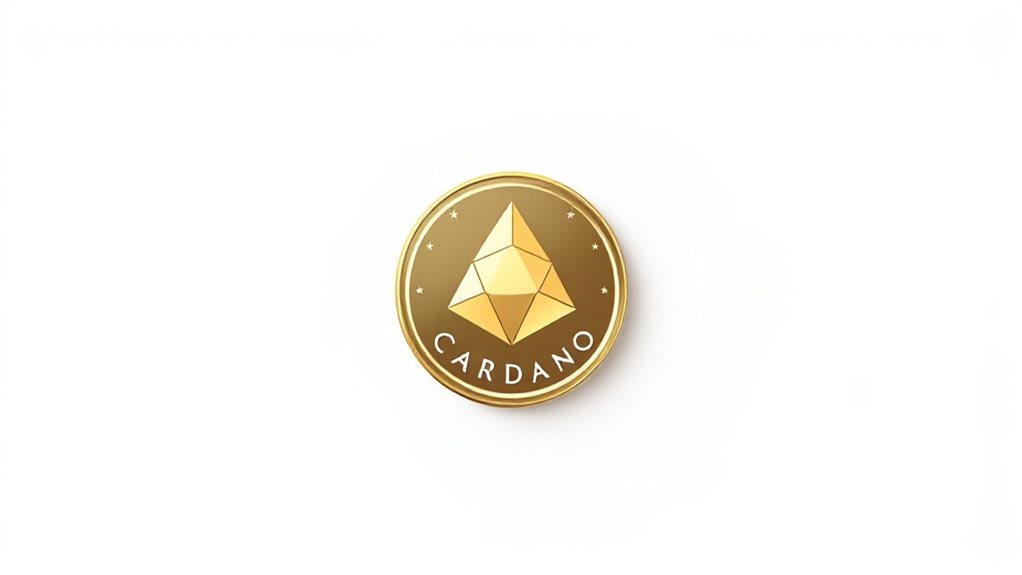ADA is the native cryptocurrency of the Cardano blockchain platform, launched in 2017 and named after mathematician Ada Lovelace. It operates on a proof-of-stake system called Ouroboros, focusing on sustainability and scalability. The crypto can be used for transactions, staking rewards, and running smart contracts. With a maximum supply of 45 billion tokens, ADA is backed by major organizations like the Cardano Foundation and IOHK. There's much more to discover about this innovative digital currency.

ADA crypto is the native digital currency of the Cardano blockchain platform. Named after Ada Lovelace, a pioneering mathematician from the 19th century, ADA was launched in 2017 with a focus on sustainability and scalability. The cryptocurrency operates on a proof-of-stake system called Ouroboros, and its total supply is limited to 45 billion ADA tokens.
The Cardano blockchain that powers ADA uses a unique layered architecture. It's got two main parts: one layer handles ADA transactions, while another takes care of smart contracts. The platform is built using Haskell, a programming language known for its security features. It also uses something called the Extended Unspent Transaction Output model, which helps process transactions efficiently. These transactions become completely immutable once they're validated on the network. The platform's sustainability is evident through its 6GWh annual consumption, making it far more energy-efficient than many competitors.
People can use ADA in several ways on the Cardano network. They can send it to others in peer-to-peer transactions, stake it to help secure the network and earn rewards, or use it to pay for transaction fees. ADA also works as a governance token, letting holders have a say in future changes to the platform. The stake collateral system incentivizes honest validation by requiring users to lock up their ADA tokens. It's crucial for running smart contracts and interacting with decentralized applications (DApps) built on Cardano.
The cryptocurrency has gained significant attention in the crypto world, becoming one of the largest by market value. It's easy to buy and sell ADA on popular crypto exchanges like Coinbase and Binance. Users can store their ADA in various digital wallets, including the official Cardano wallet called Daedalus. The crypto isn't just for trading though – it's being used in real-world applications across finance, education, and supply chain management.
Three main organizations support ADA's development and promotion: the Cardano Foundation, IOHK, and EMURGO. They work together to improve the platform and expand its use cases. The technical design of ADA makes it particularly suitable for creating and running decentralized applications, which are like regular apps but operate on blockchain technology instead of traditional servers.
ADA's combination of scientific research, technical innovation, and practical applications has helped it stand out in the cryptocurrency landscape. Its design prioritizes long-term sustainability and scalability, while its proof-of-stake system offers a more energy-efficient alternative to traditional blockchain networks. The platform continues to evolve with new features and improvements, supported by its active development community and institutional backing.
Frequently Asked Questions
How Can I Stake ADA Crypto to Earn Passive Income?
Staking ADA is a way to earn passive rewards.
It's done through wallets like Daedalus or Yoroi, where users can delegate their tokens to stake pools.
There's no lockup period, and the minimum requirement is 5 ADA.
Rewards are paid every 5 days, with typical annual returns between 2-5%.
Users keep full control of their ADA while staking, and rewards automatically compound if not withdrawn.
What Wallets Are Best for Storing Cardano's ADA Safely?
The most secure way to store ADA is with hardware wallets like Trezor and Ledger.
These physical devices keep crypto offline and safe from hackers.
For software options, Daedalus and Yoroi are Cardano's official wallets – Daedalus for desktop computers and Yoroi for both computers and phones.
There's also AdaLite, which works through web browsers, and multi-currency wallets like Exodus and Atomic that support ADA alongside other cryptocurrencies.
Where Can I Buy ADA at the Lowest Transaction Fees?
Several exchanges offer low-cost ways to buy ADA.
Binance has one of the lowest trading fees at 0.1%, while Binance P2P offers zero trading fees for direct user transactions.
On the Cardano network itself, decentralized exchanges like SundaeSwap and MuesliSwap have minimal fees due to Cardano's efficient blockchain.
The network's average transaction fee is around $0.16-$0.17, making it cost-effective compared to many other cryptocurrencies.
Why Does ADA Have Better Sustainability Than Other Cryptocurrencies?
ADA's superior sustainability comes from its energy-efficient Proof-of-Stake system called Ouroboros.
It uses just 0.5479 kWh per transaction, making it 214,672 times more energy-efficient than Bitcoin. The platform doesn't need power-hungry mining operations and only consumes 2.602 GWh annually.
The Cardano Foundation also partners with environmental organizations and supports global reforestation projects, showing their commitment to being eco-friendly.
When Will Cardano Implement Smart Contracts on Its Main Network?
Cardano has already implemented smart contracts on its main network. This happened on September 12, 2021, through the Alonzo Hard Fork upgrade.
It was a big step that let developers create decentralized apps (DApps) using Plutus, Cardano's smart contract platform. Since then, hundreds of teams have started building on Cardano, and the network's capabilities have been further expanded through upgrades like Vasil.





